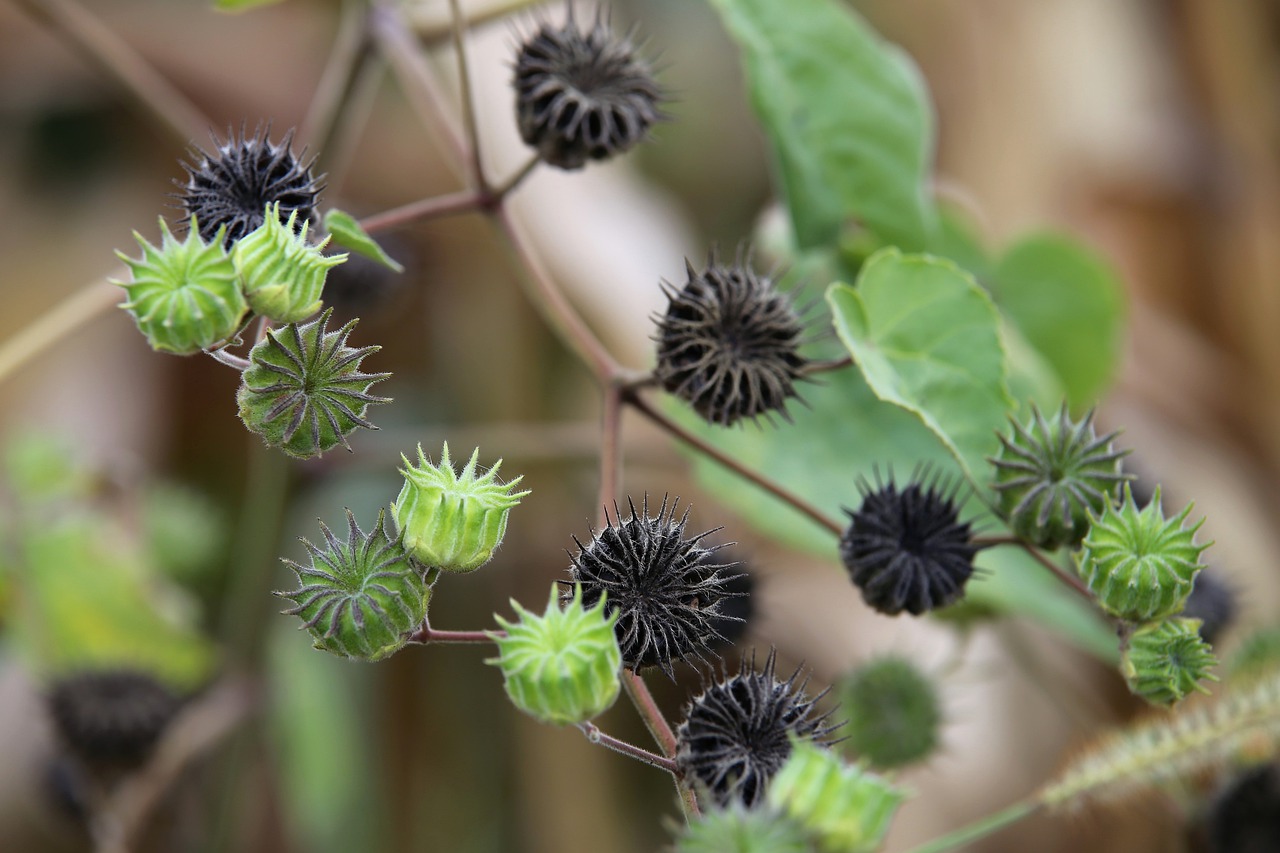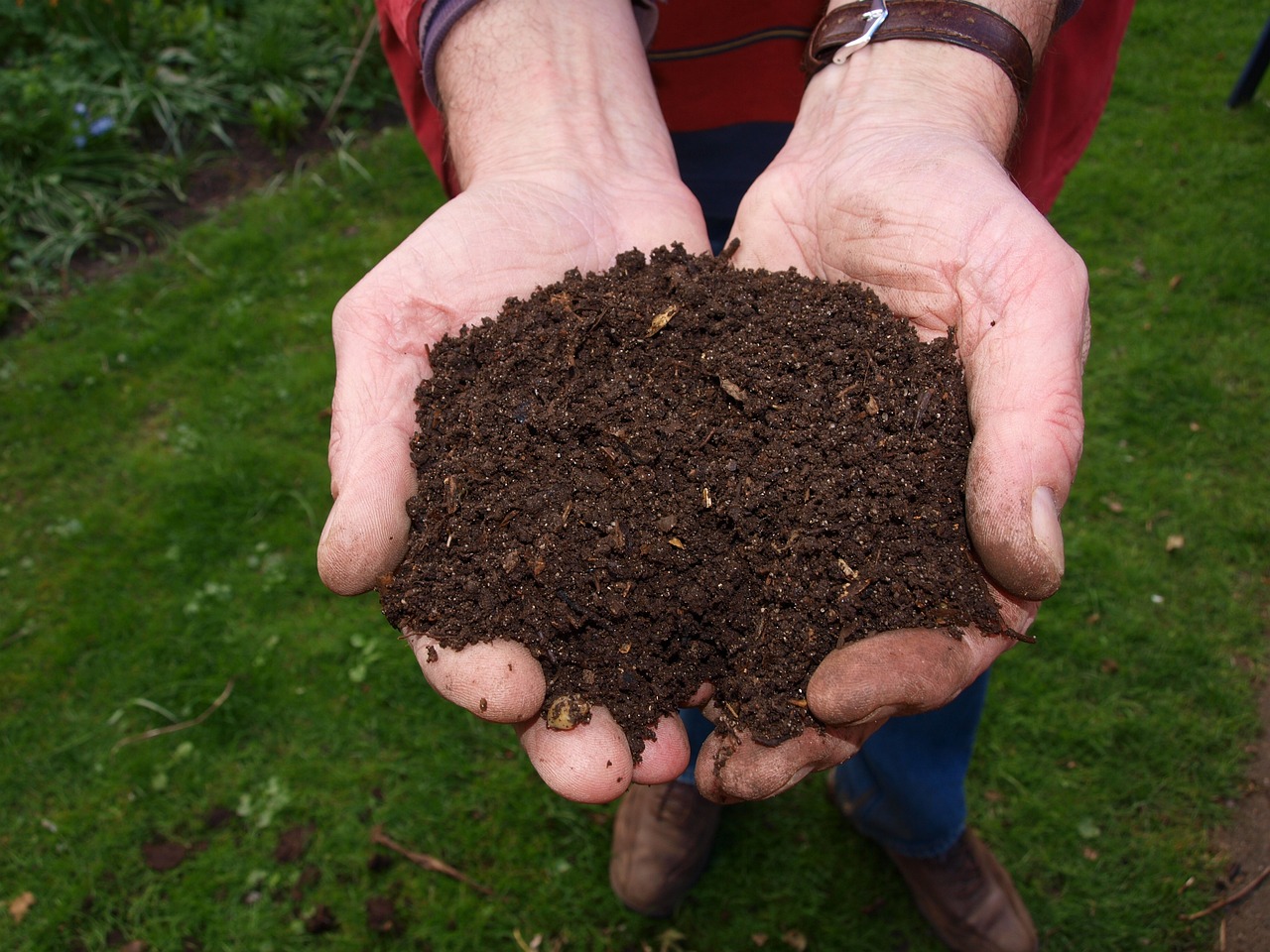In the fields and vegetable gardens, you may notice tall herbaceous weeds with yellow flowers that develop in the axils of hairy leaves resembling linden leaves. What is this plant, and does it pose a danger to your crops?

Image by Goran Horvat from Pixabay
Abutilon theophrasti (velvetleaf or velvet weed) is an annual plant from the Malvaceae family. Its leaves resemble linden leaves. In some areas, people name it “long hemp” because of its natural fiber content. The American name Velvetleaf is widespread and refers to the velvety hairiness of the whole plant.
Abutilon theophrasti – Invasive species from Asia
This invasive species is native to tropical Asia (China and India). It grows on clearings, agricultural plantations, gardens, along hedges, on construction sites.
The herbaceous upright stem can grow up to 4 meters. The stalk, which is most branched at the apex, alternately grows heart-shaped leaves of bluntly serrated edges. The width of the leaves is 7-20 cm, and their surface ranges from 300-470 cm2. The stem and leaves are covered with fine, velvety hairs, and the plant smells unpleasant to the touch. Yellow bisexual flowers with five petals develop in the axils of the leaves. The pistil is overgrown, and the anthers are numerous.
In the second half of summer, the fruit develops from a flower in the shape of a round hairy tube with 12-15 compartments. Each of them contains 1-3 seeds. The seeds are tiny dark purple to black, kidney-shaped. They are 1.5-1.9 mm thick, about 2.2-3.2 mm wide and about 2-3 mm long. According to available data, one plant can produce 700-17,000 seeds. Thus, it is a self-fertile plant and is propagated exclusively by seeds.
From food to sailing
Some parts of the plant are edible. Unripe seeds are eaten raw, while ripe seeds are cooked, dried and ground into a powder used for soups, making bread or knuckles. The taste of the seeds is a light combination of bitter and sweet. The seeds are rinsed before consumption to reduce bitterness. They contain about 17.4 percent protein, 16 percent fat (up to 30%), 33.8 percent carbohydrates and 4.4 percent ash. In addition to seeds, fruits and oil obtained from this plant are used as food.
In East Asia, people cultivate it as a textile plant for fiber production. The stems contain up to 27 percent fiber. The plants are harvested in the summer. This is done by removing the leaves and steam them to separate the fibers, consisting of about 69 percent cellulose and 17 percent lignin. A single fiber cell is about 0.9 mm long, shorter than those in hemp. However, the fiber cell width and the quality are similar to those in hemp and kenaf (Deccan hemp or Java jute). They are used for making rugs, ropes, ropes for masts and sails.
They contain 18-20 percent of fatty oil, which may be suitable for technical purposes, producing soaps and polishing compounds. Natural fibers are ideal for organic production and are attractive to the automotive industry as an alternative to glass or mineral fibers. An experiment conducted in southwestern Germany proved that Abutilon theophrasti could obtain the highest-fiber yield per plant from irrigated plantations. Its fibers are a good alternative to jute fiber; they are firm and flexible and absorb colors well. The stems are harvested in summer, the leaves are removed, and the branches are steamed to separate the fibers.
Last but not least, the sheets can be used as toilet paper.
Abutilon theophrasti also has health benefits
The root, seeds and leaves are important ingredient in traditional Chinese medicine. The plant has been used to treat dysentery, inflammation, swelling, cataracts, to heal wounds and scratches. Traditional Chinese medicine uses it as a diuretic, anthelmintic, expectorant, analgesic, laxative, and aphrodisiac. The seeds contain mucus and fatty acids and are therefore used to deal with constipation.
The phytochemical components from the stem contain phenols, polyphenols and tannins. The leaves contain 0.01 percent rutin and are used as a coating on the mucous membranes. Dried leaf tea is used as a medication for dysentery and fever. Leaf compresses are used for ulcers. Bark is an astringent and diuretic. Dried root tea is used to treat urinary incontinence.
Qing Ma Zi (Abutilon theophrasti) seeds are sold on the Internet for detoxification, stimulating lactation, reducing the feeling of pain when urinating. The research from 2021 (Study of Abutilon theophrasti Stem Extract for Its Antibacterial Activity) proved the antibacterial effect of its stem extract on some gram-positive and gram-negative bacteria.
Caution! It is not recommended to consume Abutilon theophrasti during pregnancy and lactation or in case of accelerated digestion. Intake of larger amounts can cause hallucinations, speech problems, double vision and restlessness.
Unpleasant weed
On the other hand, Velvetleaf is a frequent summer weed in many agricultural areas. In some parts of the world, it is grown as a textile crop, and in others, it is considered an invasive wild plant. It is easily adaptable, suitable for cultivation, grazing, plucking and fires. The seeds germinate for a long time (up to 60 years) and have a high reproductive potential.
In addition to being an annoying weed, this plant has an allelopathic effect on other plantations, preventing their growth. It competes with a variety of light and nutrient cultivars and releases allelopathic chemicals from leaves that slow the germination and growth of other plants.
However, it does not appear to pose a threat to natural plant ecosystems. These six flavonoids isolated from the seed coat: delphinidin, cyanidin, quercetin, myricetin, catechin and epicatechin, showed an inhibitory effect on the development of other seedlings and the growth of harmful fungi. Several papers have proven the inhibitory effect of Velvetleaf on the germination and length of sunflower roots, oats, oilseed rape, and even weeds such as showers. Abutilon theophrasti causes significant losses in corn, soybean and cotton yields. Researches recorded damage in soybeans up to 72 percent and in corn up to 70 percent of the result.
Velvetleaf prefers soil rich in nitrogen and sunny positions
This species is bred for natural fibers in China and Russia, where it thrives up to 56° North latitude (western Siberia). It is grown in some parts of the world and naturalized in Europe, Asia, America, and Australia. It is also called: hemp abutilon, American jute, American velvetleaf, Chinese jute, cotton weed, etc.
It prefers sandy, loamy and clayey well-drained soil rich in nitrogen. It needs a sunny position. Its soil pH requirements range from 5.5-6.5, but it also tolerates 4.9-8.2. The plant thrives in a variety of climates from the tropics to the temperate zone. It grows best in areas where the annual daily temperature varies between 14-25° C and tolerates 10-30° C. The annual precipitation range of 560-2000 mm suits it, but it also accepts 500-3000 mm.
The seeds are sown in early April in sheltered areas. Germinate within 2-3 weeks. The most suitable temperature for germination of dark matter is between 24-30° C. Seeds germinate from the soil at a depth of 1-5 cm from March to May. It takes 75-140 days from sowing to harvesting fiber yields. The yield of green mass is about 12 t/ha, which gives 1.8-2.4 t of dry drawn fiber. This plant is more resistant and robust than jute. Abutilon theophrasti is a highly photoperiodic plant (short-day plant).
Symbioses but also natural enemies
Abutilon theophrasti hosts the corn pest (Helicoverpa zea), the tobacco pest (Heliothis virescens), as well as three soybean diseases (Diaporthe phaseolorum var. Sojae, Collectotrichum dematium f.sp. truncatum and Glomerella cingulata). It has been reported to be able to live in symbiosis with fungi (Alternaria alternata, Cladosporium cladosporioides, Epicoccum purpurascens and Fusarium spp.). In addition, it can prolong the germination of blackcurrant seeds because they act as a barrier against some decomposers from the soil. Scientific work from 1998 and 1995 (Heppell et al., Shumway and Koide) found a significantly better growth of the dark plant when it grows in mycorrhiza with symbiotic fungi.
Its natural enemies are some insects: Althaeus folkertsi, Liorhyssus hyalinus and Niesthrea louisianica, and fungi: Colletotrichum coccodes, Colletotrichum gloeosporioides f.sp. malvae, Fusarium oxysporum, Verticillium dahliae, Gibberella baccata, Sclerotinia sclerotiorum and Septoria glycines. Insects Heliothis zea, H. virescens, attack Abutilon theophrasti seeds.
The fungus Colletotrichum coccodes has been investigated as a potential mycoherbicide to control this invasive weed. Infection with Phomopsis longicolla causes reddish-brown lesions on the lower part of the stem. In addition, a. theophrasti can host the parasitic plant Cuscuta pentagona, but only if the blackthorn root is colonized by mycorrhizal fungi (Glomus intraradices).
Spread and suppression
As already mentioned, the plant is native to India or China and has spread across Europe and America. It was introduced to the United States before 1750 as a plant for fiber production, so it went wild. The accidental spread usually takes place by transporting fodder of grain, corn and soybeans. It is also transmitted to mechanization for plowing and harvesting. Even by transporting and spreading the fertilizer, it is possible to transfer the seeds of this plant from location to location.
In some locations, farmers are forced to suppress it. The control of chemical agents depends on the national list of permitted agents. Still, it is known that herbicides are based on metribuzin, atrazine, 2.4-D, bentazone, bromoxynil, cyanasin, dicamba, linuron, halosulfuron-methyl and flutiacet-methyl are effective against it. Nevertheless, some biotypes of Abutilon theophrasti have developed triazine resistance in Maryland, Wisconsin, and Minnesota.
Additionally, it is possible to control it by mulching, so mulching with rye has been recorded on maize plantations, reducing losses caused by blackberries in yield in Japan. And intensive plowing can reduce the number of seeds that will germinate. On the other hand, manual plucking is efficient but difficult on large corn, soybean and cotton plantations.
Velvetleaf biological control
Biological control is also available. Niesthrea lousianica, Fusarium lateritium and Colletotrichum have been investigated as potential mycoherbicides for Abutilon theophrasti. Scientists also researched the action of Fusarium oxysporum, and this study showed that the germs progressed less when the fungus with ethephon was applied.
Because Abutilon theophrasti germinates longer throughout the season, the best control method has proven to be a combination of crop rotation, different herbicides and intensive cultivation.
Finally, let us mention that about 160 species of this genus Abutilon are known in the world, and several are consumed. For example, abutilon guineense and Abutilon megapotamicum, whose flowers are eaten raw and the leaves are eaten with marshmallows.
One part of humanity seems to have embraced this plant and used it daily for nutrition, healing and fiber production, while Western civilization is still waiting for the scientific community to prove its usefulness. As the plant is already widely present in our country, it is important to have basic information about its control or exploitation.

